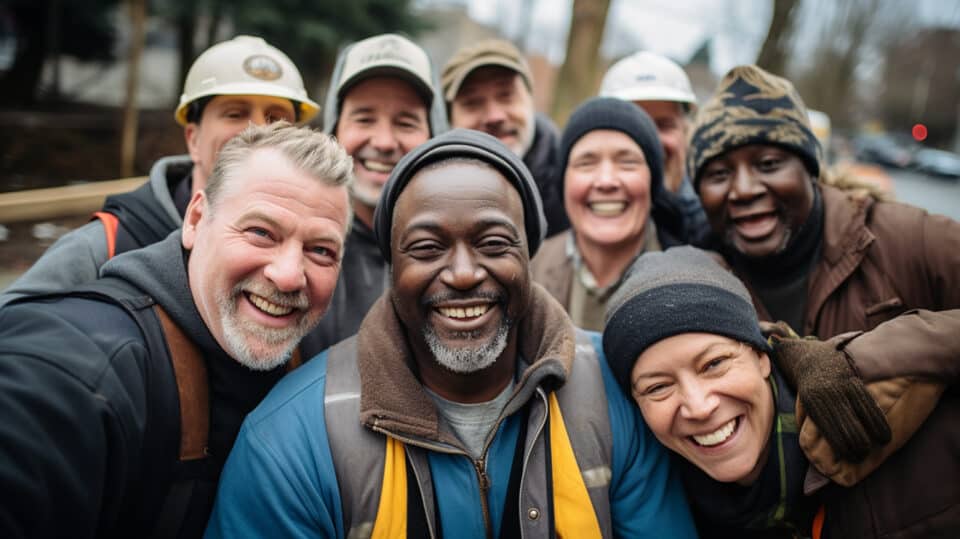We’ve all witnessed the heartbreaking reality of homelessness in our neighborhoods, and it’s impossible not to wonder how we can lend a helping hand. Much like you, I felt a strong pull toward finding tangible solutions for this progressively visible predicament.
In this article, we’ll venture into the realm of homeless prevention and resolution, spotlighting the commendable efforts by altruistic non-profit organizations such as CHANGING Homelessness in Jacksonville, Florida- an organization that has been fearlessly tackling this issue since 1978.
Are you ready to roll up your sleeves and become part of the transformative solution? Let’s take a deep dive together.
Key Takeaways
Homeless people don’t choose to be homeless. Job loss, illness, or family issues can cause it.
Non-profit groups like Changing Homelessness help a lot. They’ve helped lower the number of homeless in some areas.
Miami-Dade County has a working plan to end homelessness. They use extra money to house hundreds each year.
Volunteers are key in fighting homelessness. They count how many people live on the streets and provide direct help.
Table of Contents
Understanding Homelessness: Causes and Implications

Most people do not choose to become homeless. Often, it happens because they do not have enough money for a home. They may lose their jobs or get sick and can’t work. Sometimes, families break up, and people end up on the streets.
It’s also hard for them to find help.
Being homeless is more than just not having a place to live. It affects health and safety, too. Sleeping outside can be dangerous. Without a home, it’s tough to eat healthy food or keep clean clothes available.
Also, it can be very hard to find a job when you don’t have an address where employers can contact you.
Role of Non-Profit Organizations in Changing Homelessness

Non-profit organizations play a pivotal role in changing homelessness, exemplified by the work undertaken by Changing Homelessness, based in Jacksonville, Florida.
The example of Changing Homelessness in Jacksonville
In Jacksonville, there is a non-profit group called Changing Homelessness, which helps stop people from being homeless in Duval, Clay, and Nassau Counties in Florida. Over the last ten years, they’ve cut the number of people living in shelters by half! This is because they guide us on how to help out.
Also, they give money and support to those who need it most. Their work has helped bring down the total count of homeless people by more than half over 10 years, too! So yes, change is possible when local groups like this step up to fight homelessness head-on.
Strategies for Preventing and Ending Homelessness

We can learn from successful models like Miami-Dade County’s approach to ending homelessness; their strategy highlights the importance of community involvement and local volunteering.
Countless nonprofits drive change, but it demands a collective effort from each member of society to make a significant impact. Let’s explore more about these effective strategies in depth.
Adopting successful models, like Miami-Dade County’s approach
Miami-Dade County in Florida has a great way to help homeless people. They use extra money to get hundreds off the streets every year. The folks from Jacksonville City Council saw the success their strategy brought and tried to implement the same techniques.
Now, volunteers like me are counting how many homeless people live in Duval, Clay, and Nassau Counties. This is happening Tuesday through Thursday of next week. We’re hoping that with good information, we can change homelessness in Jacksonville, too!
Importance of local volunteer involvement
Local volunteers make a big difference in our fight against homelessness. They are the heart of CHANGING Homelessness; these brave helpers step up to count our unhoused neighbors.
By doing so, they help us get vital facts about people living on the streets. But their work doesn’t stop there! Volunteers also give help straight to those who need it most. Working in teams led by Zone Commanders, they show that ending homelessness is a group effort we can all be part of.
Their hard work and dedication show how much we can achieve when we join together for this cause.
Case Study: Success Stories in Addressing Homelessness

In Miami-Dade County, Florida, they found a way to end homelessness, making homes for people with no place to live. Jeff Bezos, the man who started Amazon, gave them $2.5 million.
With this money, they bought a motel named Arlington that failed its fire inspection. Then, they turned it into a bridge shelter.
The role of CHANGING Homelessness in Jacksonville is also important here. Since 2000, when it became a non-profit group, it has been leading the fight against homelessness in Duval, Clay, and Nassau counties of Florida.
No one wants to be homeless because housing is healthcare, and everyone deserves this human right! These are just some actions taken towards ending homelessness, but there’s still more work to do.
Conclusion
Changing homelessness is not a task for one. It needs all hands on deck. Let’s pull together and make this change real – and create a home for everyone in our community.
Frequently Asked Questions On Homelessness Prevention
What are some ways to end homelessness?
Community effort, leadership, and advocacy can help in ending homelessness. Different social service agencies, along with local nonprofits, work together to find housing solutions.
Who helps count people experiencing homelessness?
The Point-In-Time report is a tool that counts the sheltered and unsheltered homeless population. Both the Collaborative Applicant for Duval, Clay, and Nassau Counties and the HMIS System Administrator help in the homeless count.
Are there programs to assist those who are homeless?
Yes, many social service agencies offer aid to those in need. Programs like Housing Stability Program Manager from Sulzbacher or Family Promise of Jacksonville lend a hand when needed.
How do we know how many people face homelessness in our community?
By doing a PIT Count, we can learn about street homelessness in areas such as Duval County, Clay County, Nassau County, Downtown Jacksonville, etc. This includes counting individuals at homeless camps, too.
Can people facing poverty also become homeless?
Indeed! Poverty often leads to a lack of housing affordability, which could result in families being abandoned, leading them to become part of the unsheltered population.
Can there be city solutions for decreasing homelessness?
Yes! For instance, local cities can use the funding for Homeless services and work with entities like Partnership to End Homelessness or the Miami-Dade County Model, whose efforts lead towards decreasing street-level homelessness.

